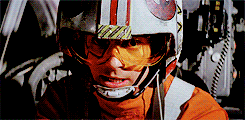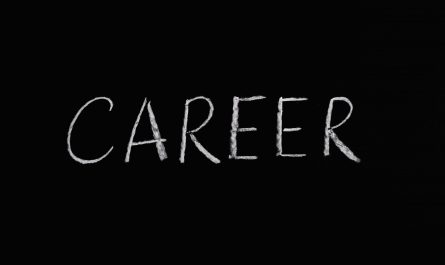Graphic Design prepares individuals to apply artistic and computer techniques to the interpretation of technical and commercial concepts. Includes instruction in computer-assisted art and design, printmaking, concepts sketching, technical drawing, color theory, imaging, studio technique, still and life modeling, multimedia applications, communication skills and commercial art business operations.
Is Graphic Design right for you? Take the free College Major Quiz – Start Now
Colleges offering a program in Graphic Design:
There are 711 schools with instructional programs in Graphic Design. Search for college here





Bachelor’s Degree or Associate’s Degree usually needed for this career.
What courses do most students take in college?
The required and elective courses you would take for Graphic Design majors vary considerably among institutions. Courses are listed here that are illustrative of the breadth of topics you are likely to experience were you to major in this field.
- 3D Graphics
- Animation
- Art
- Computer Aided Design
- Drawing
- Photography
- Web Design
Related Majors to Graphic Design?
- Commercial and Advertising Art
- Commercial Photography
- Design and Applied Arts
- Fashion/Apparel Design
- Game and Interactive Media Design
- Illustration
- Industrial and Product Design
- Interior Design
What are your future career options as a Graphic Design Major?
- Art Directors
- Art, Drama, and Music Teachers, Postsecondary
- Artists and Related Workers, All Other
- Graphic Designers
- Multimedia Artists and Animators
Remember your intended major does not always equal a clear career. Using your education in Graphic Design can lead to a diverse listing of career fields.
What does a Graphic Design Major do in their day to day career?
- Confer with clients to discuss and determine layout design.
- Create designs, concepts, and sample layouts based on knowledge of layout principles and esthetic design concepts.
- Determine size and arrangement of illustrative material and copy, and select style and size of type.
- Develop graphics and layouts for product illustrations, company logos, and Internet websites.
- Maintain archive of images, photos, or previous work products.
- Use computer software to generate new images.
- Draw and print charts, graphs, illustrations, and other artwork, using computer.
- Research new software or design concepts.
- Review final layouts and suggest improvements as needed.
- Study illustrations and photographs to plan presentation of materials, products, or services.
- Key information into computer equipment to create layouts for client or supervisor.
- Prepare illustrations or rough sketches of material, discussing them with clients or supervisors and making necessary changes.
- Prepare notes and instructions for workers who assemble and prepare final layouts for printing.
- Mark up, paste, and assemble final layouts to prepare layouts for printer.
- Produce still and animated graphics for on-air and taped portions of television news broadcasts, using electronic video equipment.
- Photograph layouts, using camera, to make layout prints for supervisors or clients.
- Develop negatives and prints to produce layout photographs, using negative and print developing equipment and tools.
What work activities are required of most Graphic Design Majors?
| Importance | Activities |
|---|---|
| Thinking Creatively – Developing, designing, or creating new applications, ideas, relationships, systems, or products, including artistic contributions. | |
| Interacting With Computers – Using computers and computer systems (including hardware and software) to program, write software, set up functions, enter data, or process information. | |
| Getting Information – Observing, receiving, and otherwise obtaining information from all relevant sources. | |
| Making Decisions and Solving Problems – Analyzing information and evaluating results to choose the best solution and solve problems. | |
| Communicating with Persons Outside Organization – Communicating with people outside the organization, representing the organization to customers, the public, government, and other external sources. This information can be exchanged in person, in writing, or by telephone or e-mail. |
Required skills for most Graphic Design Majors:
| Importance | Skills |
|---|---|
| Active Listening – Giving full attention to what other people are saying, taking time to understand the points being made, asking questions as appropriate, and not interrupting at inappropriate times. | |
| Writing – Communicating effectively in writing as appropriate for the needs of the audience. | |
| Speaking – Talking to others to convey information effectively. | |
| Operations Analysis – Analyzing needs and product requirements to create a design. | |
| Reading Comprehension – Understanding written sentences and paragraphs in work related documents. |
Required knowledge for most Graphic Design Majors:
| Importance | Knowledge |
|---|---|
| Design – Knowledge of design techniques, tools, and principles involved in production of precision technical plans, blueprints, drawings, and models. | |
| Communications and Media – Knowledge of media production, communication, and dissemination techniques and methods. This includes alternative ways to inform and entertain via written, oral, and visual media. | |
| English Language – Knowledge of the structure and content of the English language including the meaning and spelling of words, rules of composition, and grammar. | |
| Computers and Electronics – Knowledge of circuit boards, processors, chips, electronic equipment, and computer hardware and software, including applications and programming. | |
| Fine Arts – Knowledge of the theory and techniques required to compose, produce, and perform works of music, dance, visual arts, drama, and sculpture. |
Work styles for Graphic Design Majors:
| Importance | Styles |
|---|---|
| Attention to Detail – Job requires being careful about detail and thorough in completing work tasks. | |
| Innovation – Job requires creativity and alternative thinking to develop new ideas for and answers to work-related problems. | |
| Dependability – Job requires being reliable, responsible, and dependable, and fulfilling obligations. | |
| Stress Tolerance – Job requires accepting criticism and dealing calmly and effectively with high stress situations. | |
| Adaptability/Flexibility – Job requires being open to change (positive or negative) and to considerable variety in the workplace. |
There are many professional associations to further your career based as a Graphic Design Major.
Learn more here
Do you have any tips for students who want to pursue an Graphic Design major? Add a comment below with your advice.
Bureau of Labor Statistics, U.S. Department of Labor, Occupational Outlook Handbook, 2014-15 Edition, Graphic Designers,
on the Internet at http://www.bls.gov/ooh/arts-and-design/graphic-designers.htm (visited June 19, 2014).




